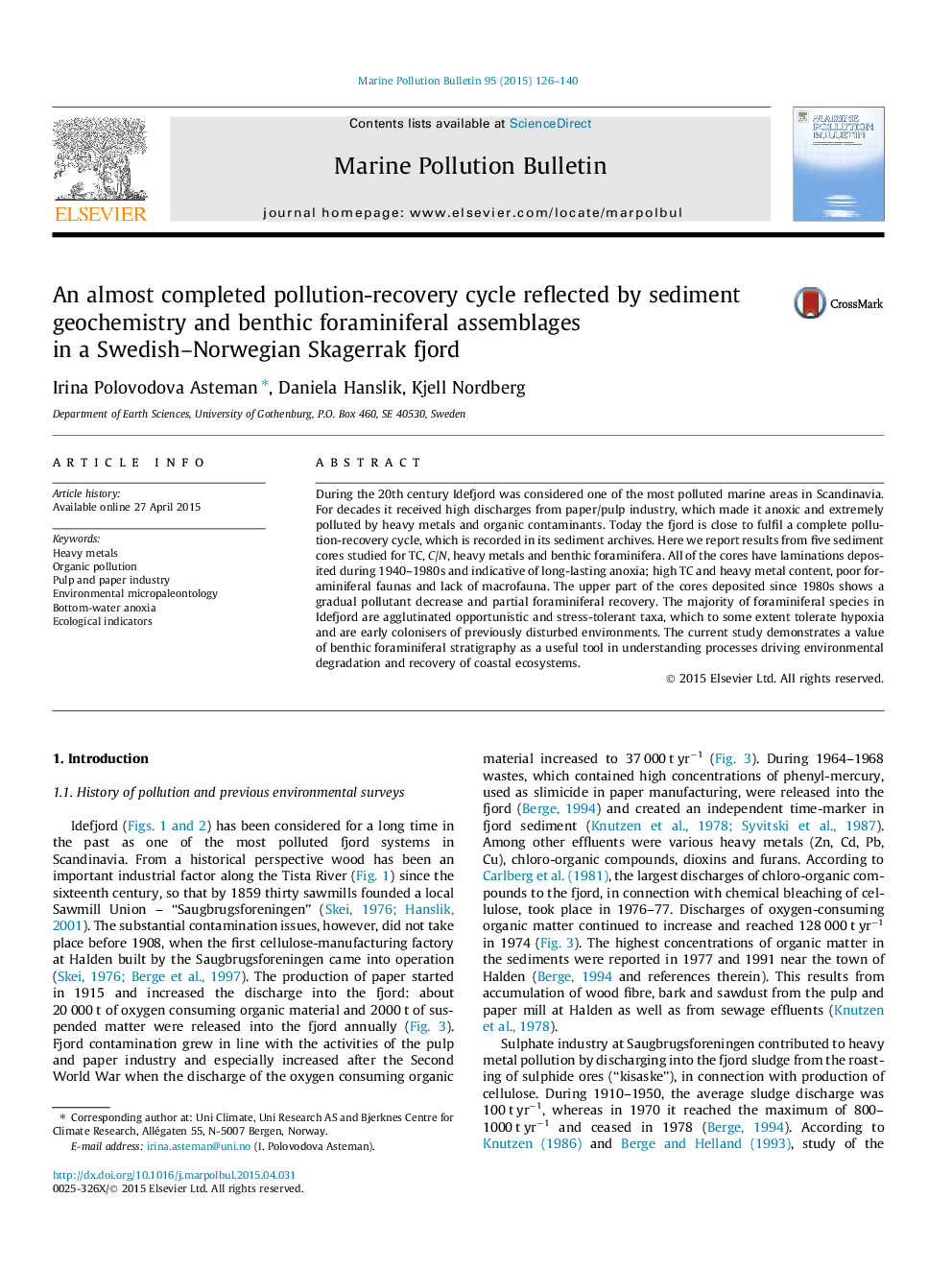| Article ID | Journal | Published Year | Pages | File Type |
|---|---|---|---|---|
| 6357288 | Marine Pollution Bulletin | 2015 | 15 Pages |
â¢Stratigraphic records in Idefjord truthfully reflect fjord pollution history.â¢Laminated core intervals indicate anoxia during 1940-1980s and are poor in foraminifera.â¢TC and heavy metal levels in laminations are much higher than background values.â¢Foraminiferal records include pre-pollution-, transitional and opportunistic faunas.â¢The part of the cores deposited since 1980s shows a gradual recovery from pollution.
During the 20th century Idefjord was considered one of the most polluted marine areas in Scandinavia. For decades it received high discharges from paper/pulp industry, which made it anoxic and extremely polluted by heavy metals and organic contaminants. Today the fjord is close to fulfil a complete pollution-recovery cycle, which is recorded in its sediment archives. Here we report results from five sediment cores studied for TC, C/N, heavy metals and benthic foraminifera. All of the cores have laminations deposited during 1940-1980s and indicative of long-lasting anoxia; high TC and heavy metal content, poor foraminiferal faunas and lack of macrofauna. The upper part of the cores deposited since 1980s shows a gradual pollutant decrease and partial foraminiferal recovery. The majority of foraminiferal species in Idefjord are agglutinated opportunistic and stress-tolerant taxa, which to some extent tolerate hypoxia and are early colonisers of previously disturbed environments. The current study demonstrates a value of benthic foraminiferal stratigraphy as a useful tool in understanding processes driving environmental degradation and recovery of coastal ecosystems.
